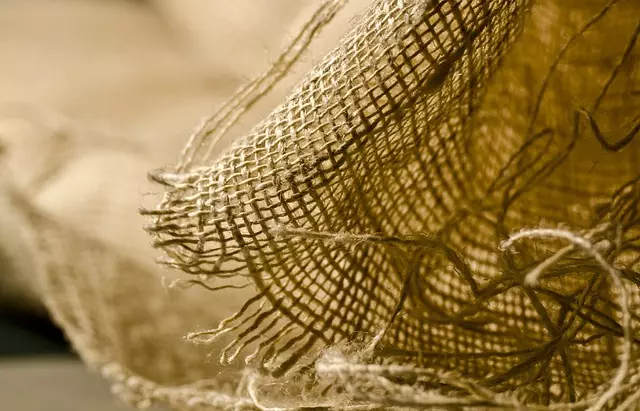Riau Kratom is a distinctive strain from Indonesia's Riau province, renowned for its robust effects and superior alkaloid content, particularly high levels of mitragynine and 7-hydroxymitragynine. This strain thrives in the province's humid climate and benefits from traditional farming methods, resulting in a consistent and potent product. Its leaves offer a diverse range of effects, from energy and mental clarity to relaxation, tailored to individual user experiences based on dosage. Due to its strength, it is advised that new users start with a small amount. The cultivation of Riau Kratom trees involves selective sapling cultivation, sustainable practices under forest canopies, and precise care to enhance leaf density and potency. The harvest focuses on peak ripeness and drying methods that preserve alkaloid integrity. This strain's unique composition has garnered scientific interest for its analgesic, anti-inflammatory, and anxiolytic properties. Its traditional use in Riau's indigenous culture and the increasing global attention on Kratom underscore the need for sustainable cultivation and ethical consumption to preserve its cultural significance and future availability.
Discover the intricate world of Vietnam’s Riau Kratom, a botanical marvel celebrated for its potent effects. This article delves into the cultivation and production processes that transform the leafy canopies of Riau’s trees into a valued commodity. Explore the scientific and cultural significance of Riau Kratom through its effects and uses, setting the stage for a comprehensive understanding of this unique plant. Join us as we unravel the layers of Riau Kratom, from its cultivation to its impact on well-being and traditions.
- Unveiling the Potency of Riau Kratom: A Comprehensive Overview
- Cultivation Chronicles: The Journey from Tree to Leaf in Riau Kratom Production
- Analyzing Riau Kratom Effects and Usage: A Scientific and Cultural Perspective
Unveiling the Potency of Riau Kratom: A Comprehensive Overview

Riau Kratom, originating from the Indonesian province of Riau, is renowned for its distinctive potency and unique alkaloid profile. This strain of kratom, with its scientifically intriguing properties, has garnered attention within botanical circles and among those exploring natural supplements for well-being. The leaves of Riau Kratom are harvested from the Mitragyna speciosa trees that thrive in the rich, humid conditions of the region. These leaves contain a higher concentration of mitragynine and 7-hydroxymitragynine, which are the primary alkaloids responsible for kratom’s effects. The specific geographic, environmental, and agronomic conditions in Riau contribute to a complex interplay that influences the potency and characteristics of the kratom leaves. As such, users often report a more pronounced experience with Riau Kratom, which can vary from heightened energy levels and mental clarity to a sense of calm and relaxation, depending on the dosage and individual physiology.
The cultivation practices in Riau are a critical factor in the quality and potency of the kratom leaves produced. The region’s soil composition, climate, and traditional farming methods all play a role in nurturing the trees to maturity. This results in a product that is both consistent and powerful, making it a preferred choice for those seeking the effects of kratom. It is this combination of natural environment and cultivation expertise that sets Riau Kratom apart from other strains available on the market. Users interested in experimenting with this potent strain should approach it with caution, as its effects can be intense. It is advisable to start with a lower dosage and carefully gauge individual responses, especially for those new to kratom use.
Cultivation Chronicles: The Journey from Tree to Leaf in Riau Kratom Production

In the dense, verdant landscapes of Riau, Indonesia, the meticulous cultivation of Mitragyna speciosa, commonly known as Kratom trees, begins a journey from sapling to harvested leaf. This region is renowned for its high-quality Kratom, with local farmers employing traditional and sustainable agricultural practices that have been passed down through generations. The process commences with the careful selection of seedlings that exhibit optimal characteristics, ensuring resilience and potency. As these young trees mature in the nurturing soil and under the canopy of their native forest, they absorb a unique blend of nutrients, contributing to the alkaloid profile of the leaves. The climate, characterized by its humidity and consistent rainfall, creates an ideal environment for the Kratom plants to thrive, allowing them to develop at a steady pace. Once mature, the trees are tended to with precision, with skilled labor pruning and caring for each plant to enhance leaf density and potency. This hands-on approach ensures that the leaves of Riau Kratom retain their efficacy and characteristic effects. The harvesting process is equally meticulous; only the most mature leaves are handpicked at peak ripeness, ensuring that each batch of Riau Kratom leaves meets rigorous standards for quality and consistency. Subsequently, these leaves undergo a drying process that preserves their alkaloid content, locking in the very essence that makes Riau Kratom one of the most sought-after strains globally. From the attentive cultivation to the careful harvesting and drying, every step in the production of Riau Kratom is designed to produce a premium product that resonates with the users’ experiences and expectations.
Analyzing Riau Kratom Effects and Usage: A Scientific and Cultural Perspective

Riau Kratom, native to the Indonesian region of Riau and its surrounding islands, has garnered attention within scientific and cultural contexts due to its distinct alkaloid profiles and effects. From a botanical standpoint, Riau Kratom leaves contain a unique blend of mitragynine and 7-hydroxymitragynine, the primary compounds responsible for the plant’s psychoactive properties. Studies examining the pharmacological actions of Riau Kratom have revealed its potential in various physiological and psychological domains, including analgesic, anti-inflammatory, and anxiolytic effects. The alkaloid content varies within different strains sourced from this region, influencing the intensity and character of its impact on consumers.
Culturally, Riau Kratom has been a part of traditional practices in the local communities for centuries. It is often used in folk medicine to treat ailments ranging from pain and fatigue to diarrhea and fever. The usage of Kratom in this region predates modern scientific interest, with indigenous knowledge providing a foundation for understanding its effects. As global interest in Kratom has grown, so too has the recognition of the importance of preserving and documenting this traditional knowledge alongside empirical research. This dual approach ensures a holistic understanding of Riau Kratom’s role in both health and cultural practices, highlighting the need for sustainable harvesting and responsible use to maintain its availability for future generations.
In exploring the intricate world of Vietnam’s Kratom, particularly the potent strain from Riau, the article has shed light on the meticulous cultivation process and the profound effects associated with its use. From the fertile lands of Riau, where the leaves are carefully tended to, to the scientific examination of its influence, it’s clear that this natural resource holds a significant place in both cultural practices and contemporary wellness discussions. As understanding and interest around Kratom continue to grow, it is crucial for further research to be conducted, ensuring the safe and responsible use of Riau Kratom. This comprehensive overview underscores the importance of continued study and regulation within this realm, paving the way for informed decision-making and potential benefits for those who turn to Riau Kratom for its effects.






